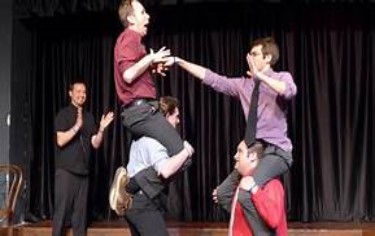I was impressed by a presentation by Cathy Malchiodi in December 2020.
I’ve tended to be troubled by my two left feet when it comes to using movement in therapy. Cathy was able to describe how two left feet may be irrelevant and, indeed, could be overcome – to my own benefit and, if all is well, to people who work with me.
Let me tell you more. Her presentation helpfully connected her expressive arts practice to the trauma-related work of Peter Levine, Stephen Porges and Pat Ogden’s Sensori-motor approach
Therapy working with our neural pathways
Each of these pages, and more on the web site, place emphasis on the neural pathways in the human brain and body. We know those pathways work from back to front – our visual systems depend on that.
Also, as Eye Movement De-sensitisation and Reprocessing (EMDR) demonstrates, there are left to right neural pathways. Eye movement and tapping are just two ways to stimulate connections between the left and right halves of our nervous system.
Elsewhere, I have talked about top-to-bottom connections. These enable our smarter and younger sibling to have a relationship with the not-so-smart and older sibling. Cathy’s presentation was making the point that your safe experiments can be designed to work from top-to-bottom (where thoughts and beliefs can influence our actions) as well as bottom-to-top (where actions can start to change thoughts and beliefs).
This is important as many people experiencing trauma will not have words to explain themselves – maybe just the vaguest sense of something-not-being-quite-right. This can happen where trauma occurs before we learn to speak or when the experience is so outside our ability to absorb it that we disconnect it from the rest of our being. The Vagus nerve ‘helps’ us in rather a radical fashion when trauma threatens our very existence and we may be about to die. Furthermore, the feature known as intergenerational trauma can figure when we are not quite sure what triggers trauma symptoms.
Working on our high emotions; not avoiding them
For some people the inability to put things into words can be embarrassing and even shaming. I can feel shame even though I cannot express myself; my trauma, alone, provides ample material for feeling that way. I feel stupid when I cannot explain myself. At this point, relying on words is going to reinforce the problem, not relieve it.
More importantly, finding a way through from non-verbal expression towards saying something is not straightforward; it follows a scenic route. In time, our ability to string words into sentences can recover. However, if you have a gobby therapist, as I am, there are strict limits to the process of working it out with words.
This disconnect that I have described can manifest in Dissociation.
Cathy, and others like Pat Ogden are saying – in effect – that talking is not enough. You can hear more about this on YouTube. It is aimed at therapists so you may need to forgive the implicit talking down to yourself if you are a ‘client’! You may find Pat Ogden herself of interest as well.
There is more about trauma-informed expressive arts on this web site.
Some safe experiments in expressive arts
Many of my readers will be more experienced in the expressive arts – writing, acting, singing, painting, sculpting and dancing to name just a few.
Some will be very active, say, climbing and sail-boarding so you have a head start on me.
However, I have already touched on some experiments that are relevant here; for example,
- the butterfly hug. Cathy adds some other movements to this. I have mentioned the left and right alternative taps. Cathy includes gentle, small rotations of your upper torso. I’d emphasise that – in my view – the best safe experiments are small and small movements may be important so we do not overdo things. .
- a new safe experiment she mentioned was to clench our hands together and do a sideways ‘eight’ or infinity movement.
- truth is, as I have said in actual sessions, any movement can qualify – even getting up and down. If you think about it, taking time out – simply getting away – is a safe experiment requiring movement.
- There are bodywork movements that address this strategy systematically: yoga, pilates and Eastern meditative traditions. Elsewhere, I mention Morita Therapy – brought to my attention by David Brazier.
- My own personal favourite is singing: I’d recommend the charity Sing Your Heart Out (SYHO) to anyone. You do not need to be a competent singer; I’m not!
- Other forms of music work for many people. I have an account with Spotify (quick advert, for once!) and I can use it to reflect my current mood very easily. The music can be a diversion, a creator of memories, soothing, confronting etc. When considering the actions can go with the music, consider the automatic response of the impala in the video at: https://your-nudge.com/one-view-of-psychological-healing-and-what-can-get-in-the-way-of-it/
- On a very specific point, have you ever wondered how Desmond Tutu managed to keep his head above water when many others were losing theirs? Have a explore around this and see what comes to mind?
What other one actions might you incorporate into your own safe experiments?
Cycles of Power and self expression
In addition to all this, Cathy’s work relates closely to the work of Pam Levin, a Transactional Analytically informed practitioner who wrote Cycles of Power back in 1988. I have said more about Pam’s work and there is a further mention available lower down on this page.
For the present, I will simply reproduce Pam’s stage of human growth and development as:
IDENTITY
REGENERATION
….. put it altogether into RECYCLING
Other leads to consider
Actions that can make up a safe experiment
